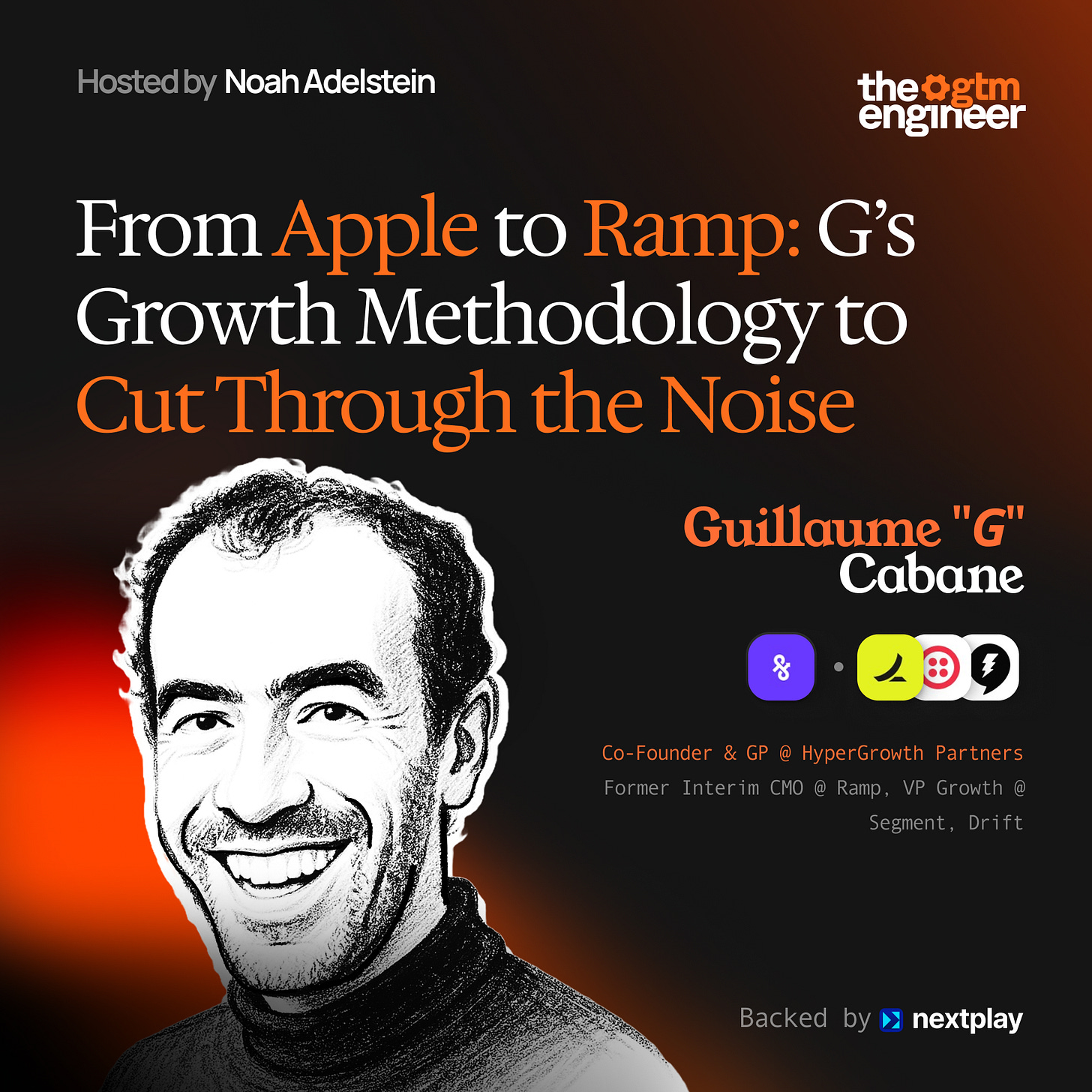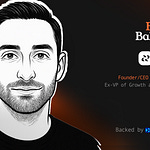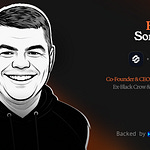Guillaume “G” Cabane’s career started in the 1990s as a teenager in France running a Mac gaming website that attracted 2,000 daily visitors. That led to an internship at Apple in the early 2000s where G worked in online SMB sales and learned to run experiments disguised as normal campaigns to avoid bureaucratic approval processes. After Apple, G spent time in IT security where he learned about the back corners of the internet and social engineering psychology.
G was positioned at the intersection of marketing and technology when growth emerged as a discipline around 2010, allowing him to become an early expert on tools like Segment, when few others understood the space. He ran growth at Segment, before a string of successful stints as VP of Growth or CMO at Drift, Gorgias, and Ramp. Today, G runs HyperGrowth Partners, a collective of VPs and CMOs who advise companies like Reddit, Ashby and Zapier on growth.
During this conversation, we talk how G’s background gave him the worldview he has today, his effective growth methodology, whether he believes in GTM Engineers, how AI is changing go to market and more.
In this podcast, we discuss:
How perfectionism and campaign quality during Apple’s Steve Jobs era shaped G’s marketing philosophy
G’s effective craziness growth framework that combines rapid experimentation and high risk tactics with scientific rigor
Why founders say they want Ramp-level growth but aren’t open to taking the risks needed to get there
G’s outbound gifting experiment that guaranteed replies in order to test whether outbound infrastructure or messaging was responsible for poor campaign performance
Why (and how) growth experiments should test one variable at a time to enable faster learning
G’s favorite AI use cases, what he thinks is just hype, and his predictions for the future impact of AI on GTM
Episode highlights:
During G’s time at Apple, Steve Jobs would demand screens be perfectly aligned so they looked like one line when viewed from the side. This attention to craft and quality became foundational to G’s approach to growth campaigns. He combines artistic perfectionism with rapid experimentation to create work that stands out in the market.
G’s effective craziness growth framework combines rapid ideation with scientific rigor to find outlier campaigns. Growth teams should fail 60 to 80% of the time because high failure rates signal they are chasing experiments that could massively outperform. The key is pairing this bias to action with documented hypotheses, baseline metrics, and thorough postmortems. This combination ensures each failure brings the team closer to finding what works by systematically extracting learnings and narrowing down winning strategies.
Most founders fail to build great growth teams because they cannot distinguish between growth and the rest of their marketing organization. They struggle with having teams that fail frequently because of the contrast to orgs like product marketing, who should be rightly fired if 3 straight product launches go poorly. Unless founders understand these differences and can hold teams accountable in different ways, growth tends to die out as companies scale.
G ran an experiment for a blue collar HR company to diagnose whether infrastructure or messaging was the problem behind poor outbound performance. Instead of a typical gifting campaign, they sent emails to leads asking them to confirm an incorrect address (a few doors down) with a gift arriving tomorrow. Since people love correcting mistakes, and picking up a package at the wrong address is painful, the campaign drove a 15% reply rate and proved that the outbound infrastructure was sound and the problem was messaging/targeting.
When a company wanted to create a gated content marketing asset, G challenged the team to test only the most critical unknown first - whether people wanted the asset in the first place. After shipping a banner and landing page promoting a non existent asset in a handful of hours, they received one tenth as many clicks as predicted, and learned people did not care about the gated content. By isolating to test the critical variable first, they cut the corner and avoided building the full asset they were planning on, saving weeks of work.
G points out that while AI enables smaller and more efficient growth teams by automating work that previously required multiple specialists, it’s still often not the right solution. For instance, when it comes to messaging enterprise leads and top ABM prospects, he hasn’t seen anyone using full AI to write copy, because the risk to reward is not there. Additionally, workflows through tools like Zapier remain critical because they deliver deterministic outcomes, not probabilistic AI results with a chance of failure.
Where to find G:
Transcript details:
(00:00) Intro
(05:37) Learning experimentation and perfectionism at Apple in the early 2000s
(09:23) Working in IT security, social engineering tactics, and an early understanding how the internet works
(16:52) G’s effective craziness methodology
(21:19) Why most companies don’t implement the growth methodology
(23:44) A crazy growth experiment that worked and why
(30:30) Whether automated marketing is easier or harder today, and ethics around automated outreach
(33:27) Standing out in an increasingly crowded market
(36:30) G’s failed growth experiments, from Apple bundles to Segment’s product team conflicts
(41:49) Building an autonomous growth team that ships quickly by cutting corners on experiments
(45:16) How AI enables smaller, faster growth teams
(47:39) Why GTM Engineer as a job title signals forward-thinking company culture
(49:52) AI in go-to-market: Its current limitations in outbound and the future displacement of sales roles
(01:00:43) Favorite underrated software tool, G’s most memorable growth hack, and conclusion
For inquiries about sponsoring the podcast and to recommend any guests, email noah@thegtmengineer.ai










